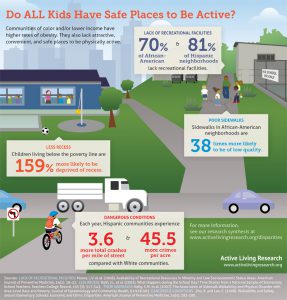By Pilar Mendez, ORISE Health Equity Research Fellow, U.S. Department of Health & Human Services Office of Minority Health, and Alison Vaux-Bjerke, MPH, Senior ORISE Prevention Science Fellow, U.S. Department of Health & Human Services Office of Disease Prevention and Health Promotion
“Without health and long life, all else fails.” Dr. Booker T. Washington wrote these words in a letter to leading African American newspapers in April 1915, proposing the observance of “National Negro Health Week.” This proposition became the foundation for National Minority Health Month, observed every April in the United States.
This year, the U.S. Department of Health and Human Services Office of Minority Health is joining partners throughout the nation to “Bridge Health Equity Across Communities,” raising awareness about health disparities and encouraging communities to bolster collaborations, reach across sectors, and address the social, economic, and environmental factors that influence the health of our communities – the social determinants of health.
All people, regardless of where they live or where they come from, should have the opportunity to reach their full potential for health. Creating environments that promote physical activity helps prevent and control chronic diseases, reduce disparities, and improve healthy lifestyle options. Aspects of neighborhood environments, such as the presence of walkable sidewalks and playgrounds, proper lighting of streets, after-school physical activity programs for youth, and availability of affordable nutritious foods can promote and encourage healthy behaviors like physical activity.
Many organizations and government agencies have developed resources targeting the social determinants of health to reduce health disparities within neighborhoods and communities. Here are a few examples of physical activity-focused resources to check out as you observe National Minority Health Month:
- In 2015 the Surgeon General released Step It Up!
 The Surgeon General’s Call to Action to PromoteWalking and Walkable Communities. One highlight: making communities more walkable promotes safety, social cohesion, and benefits local economies. A Status Report was issued in April 2017 highlighting success stories from states, communities, and organizations across the country.
The Surgeon General’s Call to Action to PromoteWalking and Walkable Communities. One highlight: making communities more walkable promotes safety, social cohesion, and benefits local economies. A Status Report was issued in April 2017 highlighting success stories from states, communities, and organizations across the country. - In April 2016, the National Physical Activity Plan was updated. The Plan includes strategies and tactics designed to increase physical activity through policies, programs, and initiatives across nine sectors: Business and Industry; Community Recreation, Fitness and Parks; Education; Faith-Based Settings; Healthcare; Mass Media; Public Health; Sport; and Transportation, Land Use and Community Design.

- The Building Healthy Places Network issued a call to action to community development, public
health, and medical professionals to workcollaboratively on reducing health disparities and addressing the social determinants of health to make neighborhoods healthy places. - Active Living Research has created tools and resources, including infographics like the one below, for stakeholder groups to use in their work preventing childhood obesity and promoting active communities.
One hundred years ago, Dr. Washington argued that health was the key to progress and equity in all other things. Although progress has been made, we must keep encouraging physical activity and making sure our communities are safe, accessible, and walkable.
Visit https://minorityhealth.hhs.gov/NMHM17/ for more information about National Minority Health Month.
Spread the Word!
Share this post with your network using these sample tweets: New BAYW blog from @MinorityHealth about #SDOH and the role of communities in increasing physical activity. #NMHM17 http://bit.ly/2pjua6A